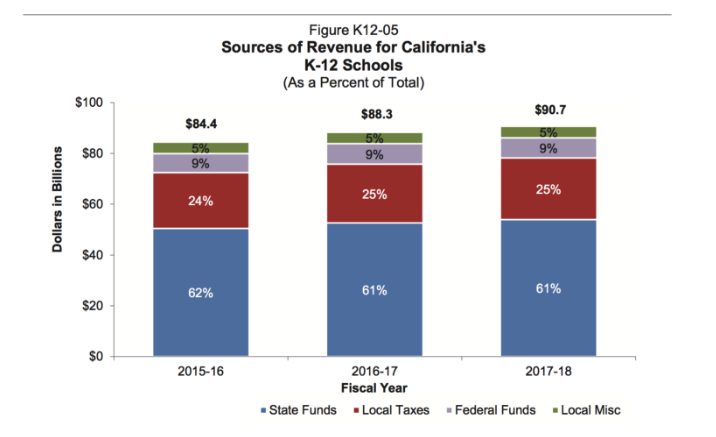Rolling Stone just ran a hagiographic interview with California governor Jerry Brown accompanied by this headline: Jerry Brown’s California Dream: is this the blueprint for a more progressive America? But the very same week CALMatters ran a column with a very different headline: Latest academic tests underscore California’s education crisis.
How could Rolling Stone conduct a lengthy interview with California’s governor and not ask a single question about K-12 education?
K-12 education in California is a highly centralized, $90 billion per year, state operated enterprise run by the governor and legislature. Local school districts have little authority over the critical components of successful K-12 education such as tenure and teacher dismissal rules or affordable levels of pension promises without the consent of the governor and state legislature. With six million kids attending California public schools, one would think Rolling Stone would ask the state’s governor who oversees those schools how schoolchildren are faring. After all, K-12 is the largest expenditure made by the state General Fund and the governor and state legislature write the Education Code.
More than half of California students can’t read at grade level and less than 40 percent meet math standards despite a doubling in spending per student.
Had I been the reporter, I would’ve asked these questions of Governor Brown:
- Why did you oppose the Vergaralawsuit filed by poor and minority students in the Los Angeles Unified School District alleging that their civil rights were being violated by California’s teacher tenure and dismissal rules? Will you work with the legislature in your final year to reform those rules?
- This year San Francisco Unified School District will devote only 29 percent of its budget to teacher salaries because of exploding spending on unfunded pensions and retiree health care. That’s the principal reason classrooms are understaffed and salaries are inadequate despite a big tax increase and big revenue gains. What steps are you and the legislature going to take to address that problem?
- California raised income taxes 30 percent and state revenues are up sharply from a bull market that has accompanied your entire tenure in office yet the Los Angeles Unified School District — the second largest in the country with 640,000 students — doesn’t qualify for a Positive Certification from your Department of Education because of worries that it cannot meet its financial obligations. What steps are you and the legislature taking to address that problem?
An interviewer not asking a California governor how kids are performing in the schools that governor oversees is the equivalent of not asking the president of Boeing about aircraft production.
All too often journalists, donors and voters correlate gubernatorial success or failure with matters over which governors have little influence. But in our federalist system the principal responsibility of states is to provide domestic services such as K-12 education. Governors tend to speak of grand visions but most of what they do is prosaic, as explained here and here. No task is more important to states than K-12 education. California is failing that test.
California spends much more per student than Texas yet poor and minority students in Texas perform better. That won’t be fixed until California’s governor and legislature ensure tax money makes it to the classroom and classrooms are always taught by effective teachers.
California’s governors have no greater responsibility than improving the performance of K-12 students. Journalists, donors and voters should pay attention to what governors actually do.


